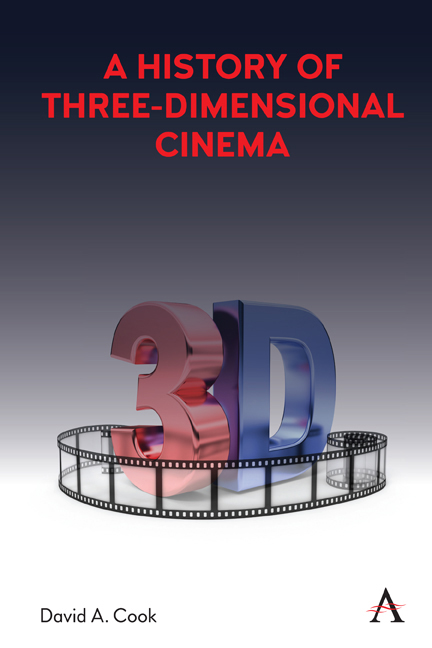Book contents
- Frontmatter
- Dedication
- Content
- List of Figures
- Acknowledgements
- Prefatory Note/Introduction
- 1 “A New Way to Simulate Presence”: The Foundations of Stereoscopic Entertainment, 1427–1888
- 2 “A Very Vivid Impression of Movement”: Early 3D Cinema, 1895–1952
- 3 “See It in 3 Dimension!”: The First Hollywood 3D Boom, 1952–55
- 4 Stereoscopic Revival, 1970–85
- 5 The Age of IMAX, or the “Immersive Cinema,” 1986–2009
- 6 The Blockbuster Years: Digital 3D, 2010–20
- 7 “A Different Kind of Mental Image”: Some Aesthetic Considerations about 3D
- 8 “Experience on Demand”: Virtual Reality
- 9 Conclusion
- 3D Discography: Discs Viewed or Sampled in Preparation for This Book
- Selected Bibliography
- Index
2 - “A Very Vivid Impression of Movement”: Early 3D Cinema, 1895–1952
Published online by Cambridge University Press: 22 October 2021
- Frontmatter
- Dedication
- Content
- List of Figures
- Acknowledgements
- Prefatory Note/Introduction
- 1 “A New Way to Simulate Presence”: The Foundations of Stereoscopic Entertainment, 1427–1888
- 2 “A Very Vivid Impression of Movement”: Early 3D Cinema, 1895–1952
- 3 “See It in 3 Dimension!”: The First Hollywood 3D Boom, 1952–55
- 4 Stereoscopic Revival, 1970–85
- 5 The Age of IMAX, or the “Immersive Cinema,” 1986–2009
- 6 The Blockbuster Years: Digital 3D, 2010–20
- 7 “A Different Kind of Mental Image”: Some Aesthetic Considerations about 3D
- 8 “Experience on Demand”: Virtual Reality
- 9 Conclusion
- 3D Discography: Discs Viewed or Sampled in Preparation for This Book
- Selected Bibliography
- Index
Summary
Motion pictures
The source of Émile Reynaud's despondency was apparently his failure to have invented true motion pictures, in which he was preceded by the Edison Corporation in 1893 and Lumières Freres in 1895. The Edison Kinetograph, actually “invented” by laboratory assistant William Kennedy Laurie Dixon (1860–1935), was a clever synthesis of existing principles and techniques derived from Eadweard Muybridge (series photography), Étienne-Jules Marey (chronophotography), and others that used celluloid roll film in a battery-driven camera to take photographic exposures of things in motion at the approximate rate of 40 frames (and later 16 and 24) per second. The Kinetograph incorporated what have come to be recognized as the two essential components of motion picture camera engineering: (1) a stopmotion device to ensure the regular but intermittent movement of the film strip through the camera (adapted by Dixon from the escapement mechanism of a watch) and (2) a perforated film strip (first innovated by Reynaud for his Théâtre Optique). Intermittency permits the unexposed film strip in its transit through the camera to be stopped for a fraction of a second before the lens while the shutter opens to admit light bouncing off the subject and expose the individual frames. The synchronization of the film strip and the shutter is accomplished by the perforations in the film strip, which is pulled through the camera by a system of clawed gears known as sprockets. This process is reversed in the projector or viewing device, with the perforations—or sprocket holes—ensuring the exact regularity of the film strip's movement as it passes through both machines. Because it was battery-driven, the Kinetograph was virtually inert, weighing about 600 lbs, and it could only be used inside of a purpose-built studio called the “Black Maria.” Furthermore, Edison did not initially commission the designing of a projector, so motion pictures made with the Kinetograph were first seen in a coin-operated peepshow device called the Kinetoscope. (In 1896, Edison bought the rights to a projector invented by C. Francis Jenkins and Thomas Armat and patented it as the “Edison Vitascope,” so that Kinetograph films could then be exhibited to large audiences.)
- Type
- Chapter
- Information
- A History of Three-Dimensional Cinema , pp. 11 - 24Publisher: Anthem PressPrint publication year: 2021

